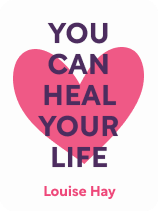

This article is an excerpt from the Shortform book guide to "You Can Heal Your Life" by Louise Hay. Shortform has the world's best summaries and analyses of books you should be reading.
Like this article? Sign up for a free trial here.
What’s the purpose of affirmations? How can reciting affirmations help you reprogram your mind for more positivity?
Positive affirmations are statements that you make to yourself, either out loud, in your head, or in writing, to counteract your negative thinking. According to Louise Hay, positive affirmations can help you imprint positive thoughts on your subconscious mind.
Here’s how you can harness the power of positive affirmations to reprogram your mind.
The Power of Positive Affirmations
In her book You Can Heal Your Life, Louise Hay argues that if you substitute your negative thoughts with positive affirmations, you can attract more positive experiences into your life. Hay reminds us that this is effective because your subconscious mind accepts your conscious thoughts as the truth. For example, if instead of thinking, “I’m so unhappy,” you think, “I am happy,” this positive affirmation will convince your subconscious that you really are happy.
(Shortform note: Most psychologists agree that positive affirmations don’t solve your problems simply by existing. However, some say that the act of repeating positive affirmations can calm anxiety and put you in a more clear frame of mind, which enables you to handle any situation with greater care and better decision making. In this way, you might feel more confident and positive and have better results than had you not repeated any affirmations at all.)
Use Affirmations Consistently and Holistically
According to Louise Hay, positive affirmations can solve your problems and change your life. However, she does issue a few caveats when it comes to relying on them. First, she says that if you want to heal yourself, you have to practice every day: If you’ve been relying on negative thinking your whole life, it’s not something you can change overnight. (Shortform note: How often is often enough? Some say to begin with repeating your affirmation ten times when you wake up and ten times when you go to bed, and build from there.)
Second, Hay cautions that she doesn’t have all the answers and that different healing techniques work for different people. She advocates a holistic approach to healing that addresses the body, the mind, and the spirit, and includes practices like eating healthy foods and meditating. (Shortform note: The mind-body-spirit connection is a tenet of many ancient and indigenous belief systems, particularly as it relates to healing.)
| Benefits and Risks of Positive Affirmations and the “Law of Attraction” Hay’s theory that you can “attract” positive experiences by thinking positive thoughts is part of a long tradition of spiritual and self-help teachings often collectively referred to as the “law of attraction.” While these ideas have been around since the 1800s, they’ve been popularized in the last century by a series of best-selling books, including Napoleon Hill’s Think and Grow Rich (1937), Norman Vincent Peale’s The Power of Positive Thinking (1952) and Rhonda Byrne’s The Secret (2006). All of these books have in common the message that your present thoughts create your future reality, which supports the argument for affirmations to always be stated in present tense. Studies show that there are many benefits to positive thinking, including increased coping skills during difficult times, lower rates of depression, greater job satisfaction and workplace productivity, and a longer life span. However, researchers caution that positive thinking doesn’t mean ignoring negative thoughts or transforming reality with your mind; instead, it means being an optimistic person and meeting life’s inevitable challenges with a positive attitude. The law of attraction also carries with it some risks. As we’ve already alluded to, one of the most serious risks is that a person will ignore actual harm as a result of positive thinking. Positive thinking can be dangerous or even deadly if a person fails to seek necessary or life-saving medical treatment due to a belief that they can “cure” themselves of a serious illness using positive affirmations. This risk of harm doesn’t just apply to illness and disease. For example, one study found that focusing only on positive thoughts could cause victims of abuse to underestimate its severity and stay in abusive relationships longer, exposing them to increased danger of bodily harm or death. |

———End of Preview———
Like what you just read? Read the rest of the world's best book summary and analysis of Louise Hay's "You Can Heal Your Life" at Shortform.
Here's what you'll find in our full You Can Heal Your Life summary:
- The causes and effects of negative beliefs
- How to transform your negative thoughts into positive ones
- How to solve your problems with relationships, money, work, and even illness






